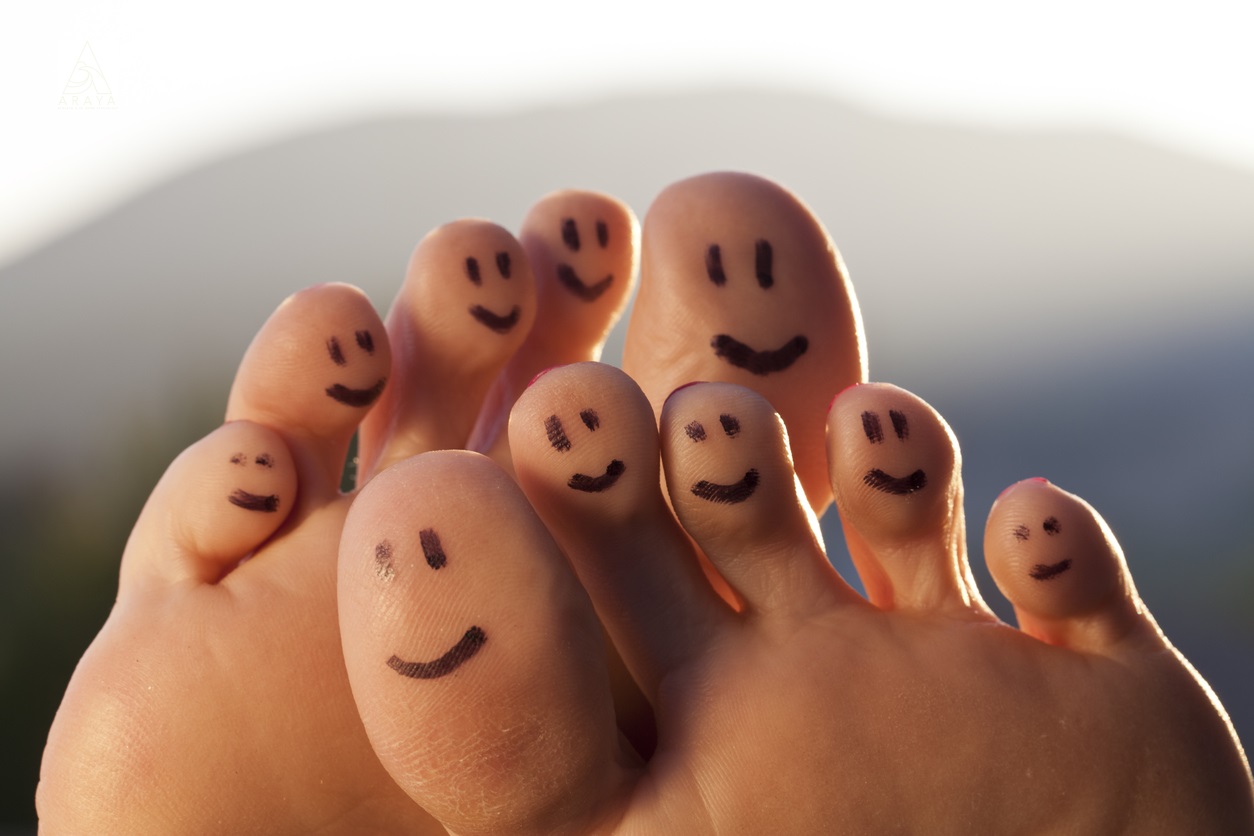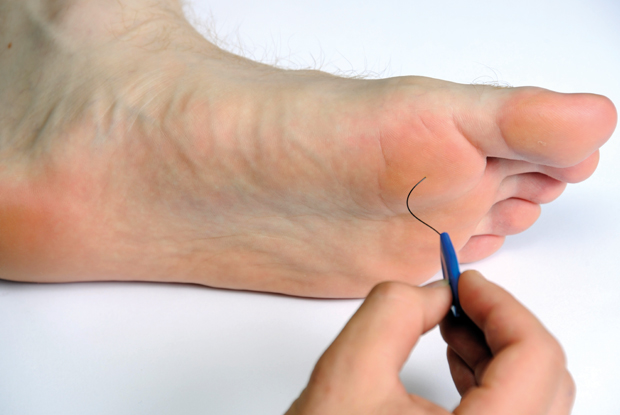
Uncontrolled diabetes can damage your nerves. If you have damaged nerves in your legs and feet, you might not feel heat, cold, or pain. This lack of feeling is called "sensory diabetic neuropathy."
If you do not feel a cut or sore on your foot because of neuropathy, the cut could get worse and become infected.
The muscles of the foot may not function properly, because the nerves that make the muscles work are damaged.
This could cause the foot to not align properly and create too much pressure in one area of the foot. It is estimated that up to 10% of people with diabetes will develop foot ulcers. Foot ulcers occur because of nerve damage and peripheral vascular disease.
Some Common Foot Problems With Diabetes?
Athlete's foot . Athlete's foot is a fungus that causes itching, redness, and cracking. Germs can enter through the cracks in your skin and cause an infection.Fungal infection of nails. Nails that are infected with a fungus may become discolored (yellowish-brown or opaque), thick and brittle, and may separate from the rest of the nail.
Blisters. Blisters can form when your shoes rub the same spot on your foot. Wearing shoes that do not fit properly or wearing shoes without socks can cause blisters, which can become infected.

Dry skin. Dry skin can crack, which can allow germs to enter. Use moisturizing soaps and lotions to help keep your skin moist and soft.
Foot ulcers. A foot ulcer is a break in the skin or a deep sore, which can become infected. Foot ulcers can result from minor scrapes, cuts that heal slowly or from the rubbing of shoes that do not fit well. Early intervention is important in treatment.

Courtesy of WEB MD

Comments
Post a Comment